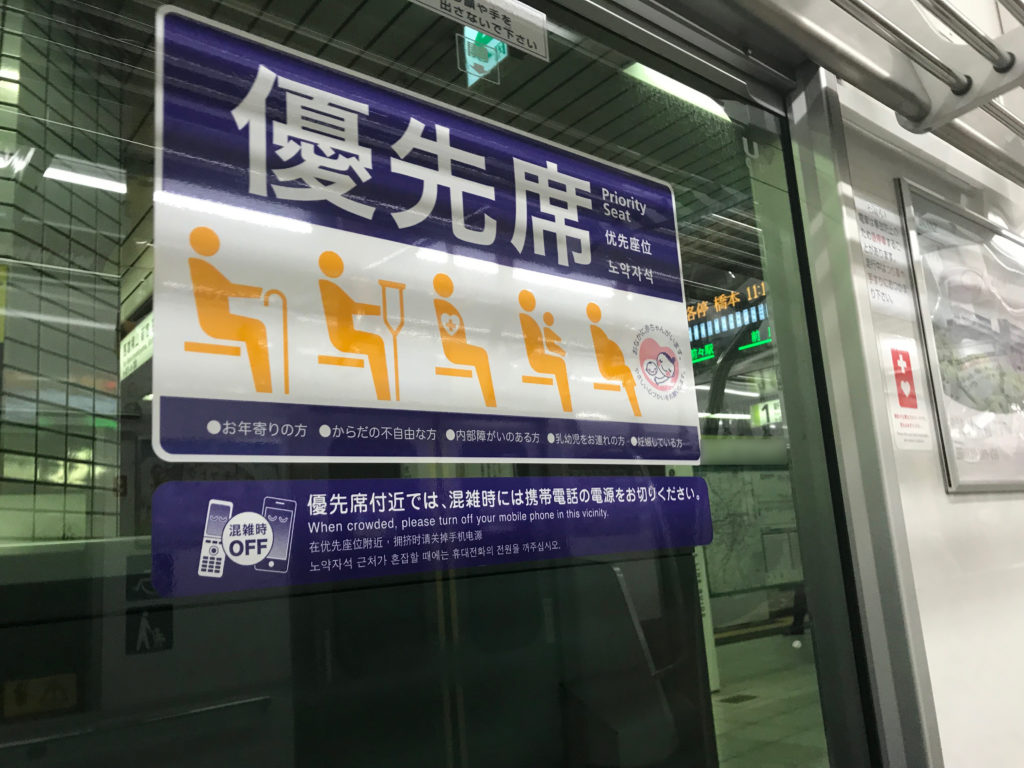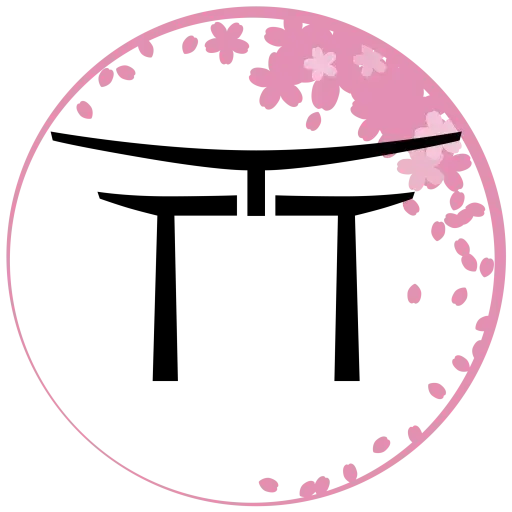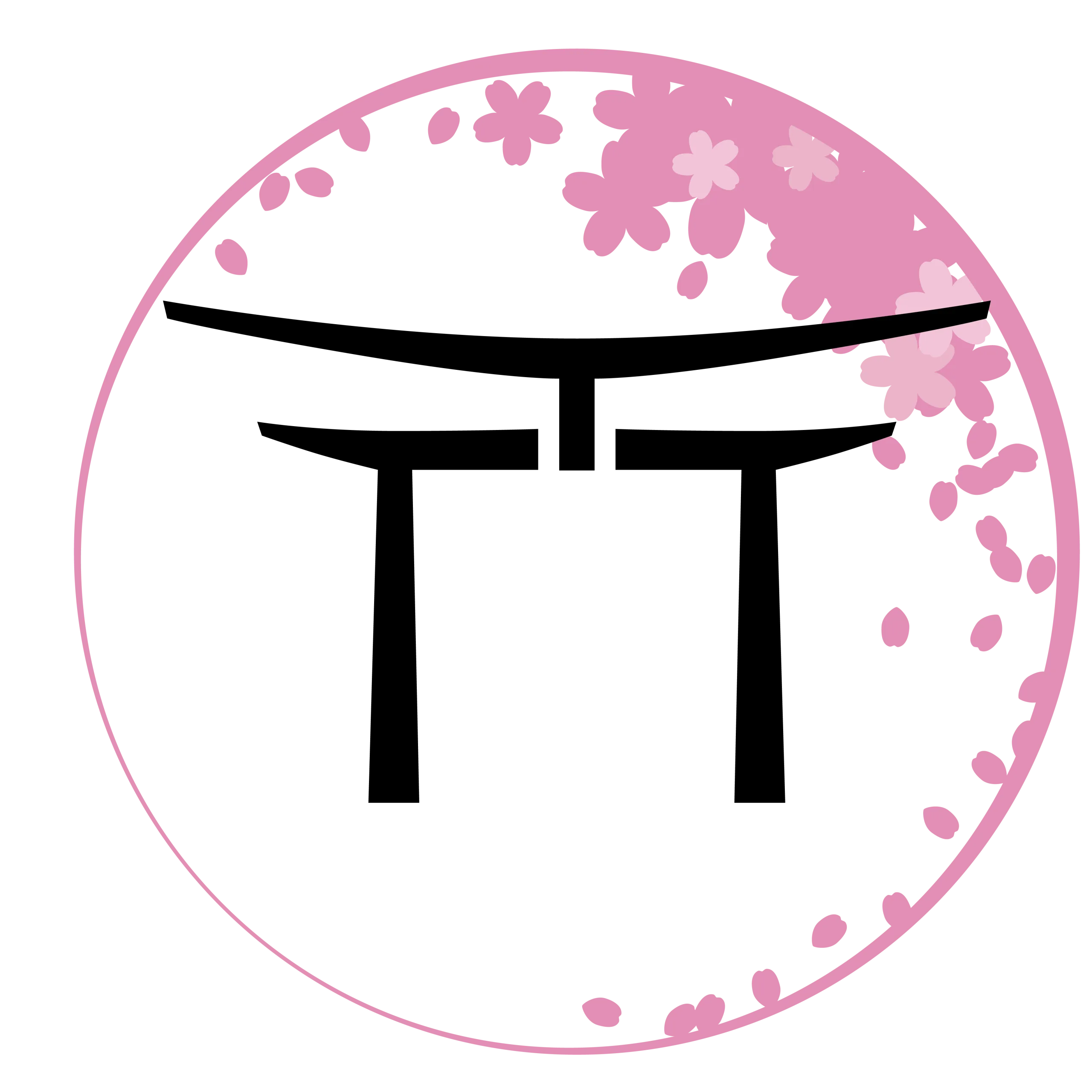Pregnancy in Japan: The First Trimester, Commuting, and Choosing a Clinic

Last Updated on May 1, 2024 by Kay
This post may contain affiliate links, meaning I may earn a small commission on any purchases through those links at zero additional cost to you. Whatever I make goes to keeping this website running and I am forever grateful for the support. See my Privacy Policy for more information.
At 38 weeks, I thought it would be interesting to look back and reflect on each of the three trimesters of pregnancy. There were some things that I expected, others that were completely out of the blue and some that I hadn’t experienced while other mothers-to-be did. As the content is a bit long, this will be broken into three parts, starting with (of course) the first trimester.
Note that pregnancy in Japan is considered to be 10 months long as a month is exactly four weeks according to the medical system.
The first trimester is from 1 to 15 weeks (1 to 4 months) and is called 妊娠初期(ninshin shoki).
The second trimester is from 15 to 27 weeks (5 to 7 months) and is called 妊娠中期 (ninshin chuki).
The third trimester is from 28 to 36~40 weeks (8 to 10 months) and is called 妊娠後期 (ninshin kouki).
To avoid confusion, I’ll try to refer to my pregnancy in weeks rather than months.
Table of Contents
Pregnancy — The Hangover that Lasts Weeks
Ah, the first trimester. It feels like so long ago. My husband was kind enough (cough, cough) to take videos of me during this time, which I looked at last week. 90% of the videos consisted of me lying on the couch, cocooned in a blanket, and barely functioning.
I didn’t have morning sickness to the extent that I threw up daily (in fact, I only vomited twice throughout my entire pregnancy) but I was definitely nauseous. I wanted to throw up and there were times I would wake up in the middle of the night wishing I would just for some sort of relief.
This went on from when I was around 6 weeks pregnant to 17 weeks, so a bit into the second trimester.
When I first found out I was pregnant, I wasn’t nauseous at all. Actually, as I wrote about in this post, I had heartburn, which was very unusual for me. I had been pregnant a few months prior and had no symptoms, ultimately losing the baby at around 7 weeks. Morning sickness is usually a sign that the baby is doing well so I felt relieved when eventually, I started to feel very, very sick.
(Note that some people never experience morning sickness at all and go on to have healthy pregnancies and babies, so please don’t let this worry you if you’re one of the lucky few who feels completely fine in the first trimester. If you have any concerns, do not hesitate to talk to your doctor.)
The doctor, unfortunately, said that since I wasn’t throwing up and didn’t need to be hooked up to an IV (which does happen to some moms-to-be), the only thing she could give me to help me feel better was a powdered Chinese medicine called kanpo or kampo (漢方). This tasted awful and didn’t make much of a difference for me so I didn’t really use it.
Although I didn’t throw up, there was a lot I didn’t want to eat or drink. I subsisted on apple and orange juice, water, bread, granola bars, and apple sauce. The blander, the better. At times I could eat pasta but just barely. Oily foods and meat were completely out but by the end of the first trimester, I started to experience cravings, specifically sweets.
I was also exhausted. I would come home from work and by 7 or 8 PM I would be completely passed out on the couch. At times it felt like a hangover that lasted weeks.
The Bane of My Existence: Commuting While Pregnant in Japan
This was a time when I was very scared due to my previous loss. We didn’t tell anyone about the pregnancy, didn’t register the pregnancy at the municipal office, and I tried to take it as easy as possible, which included using my previous maternity badge on the train and using my paid holidays to leave work an hour early when I could.
In Tokyo, sometimes it can be hard to get a seat even in the priority section but it’s important to take care of yourself and your baby, especially as trains can suddenly stop and cause people to fall into you or you yourself to fall. Not to mention that on some lines, people tend to force themselves on and will shove you, as well as others, without hesitation to make room.
If there weren’t any seats available in the priority section, I would ask someone who didn’t have a Help Mark or a visible disability if they could give up their seat for me and it worked every time.
The phrase I used was:
すみません、妊娠して体調が良くないので、席を譲ってもらえませんか。
Sumimasen, ninnshinshite taichou ga yokunai node, seki o yuzutte moraemasenka
Excuse me, I’m pregnant and not feeling well. Could you please give up your seat for me?

Yuusenseki or Priority Seats. Don’t be afraid to ask to sit here because these seats are also for you, mama! The maternity mark or badge is pictured on the far right, which you will receive from your local city hall or ward office after you register your pregnancy.
I made sure to show my maternity badge as well. Sometimes I didn’t even make it past saying, “Sumimasen” because the person I asked would quickly get up and offer me their seat.
I will say, though, that throughout my pregnancy, I was offered a seat a total of six times, once by a woman and five times by men who were at least in their sixties. It was disappointing, especially in cases where young men would be clearly drunk and sitting in the priority seats or playing video games, reading manga, and at times even talking on their phones. I would get really frustrated, which wasn’t good for the baby.
However, not all disabilities are visible and someone sitting in the priority seat may be feeling sick as well, so I tried to avoid rush hour or traveling late as much as possible, especially as even if I was sitting down, crowded trains made me feel very nauseous.
I had to get off the train more than once because I felt like I was going to either pass out or throw up and ended up buying disposable sick bags for my commute. It may have made the person next to me uncomfortable but I wasn’t really in a position to care. I also made sure to have a mask on me because smells ranging from perfume to body odor would make me feel sick and the mask was great at diminishing offensive odors.
Pregnancy in Japan — Checking Baby
To handle our paranoia about the baby, my husband and I invested in a fetal doppler called エンジェルサウンズ (Angelsounds). It was pricier than ones you can get in North America but we preferred to buy something in Japan in case there was some problem with the device.
Dopplers are a bit controversial for several reasons, which I won’t go into here, but it was a great investment during the first trimester. We never used it in lieu of going to the clinic and by the second trimester when I started to feel movement, we stopped using it entirely as movement is truly the best way to check how your baby is doing.
Pregnancy in Japan — Choosing a Clinic
In terms of choosing a clinic, I had been visiting my clinic for half a year since my previous loss so we already had a routine appointment when I told the doctor that I had a positive pregnancy test. As she had been helping me with getting my cycle back to normal, she was thrilled and did an ultrasound immediately.
The baby was the tiniest little pea and already had a heartbeat at 4 weeks and 5 days (I’m getting emotional just remembering). We continued to visit the clinic once a month in the first trimester, which was really hard because we were so worried about the baby. I wanted to go every week! Usually at 8 weeks, the clinic would do an examination where they check the mother’s blood, etc., but as I had experienced a miscarriage around that time early in the year, we made the decision with the doctor to wait until after 12 weeks.
That being said, I believe it’s important to find a clinic that you’re comfortable with and can accommodate your birth plan as much as possible. (Of course, births don’t always go to plan but if they’re willing to listen to you and meet you halfway, that’s always a good sign.)
Your clinic shouldn’t be too far from where you live as you have to factor in how long it takes to get there when you’re going to give birth. Our clinic is a 30-minute drive from our place and although we have a car, my husband registered me for a service called ママサポートタクシー (mama support taxi). This is a 24-hour 7-day-a-week service where a special taxi is available to take pregnant women who are in labor to their clinic or hospital. My name, phone number, home address, and clinic are registered with the service so all I would need to do is call, let them know I’m in labor, and a taxi will quickly show up and take me to the clinic.
Below is how to say you’re in labor and need to be taken to the hospital in Japanese:
陣痛が来たので、病院までお願いします
Jintsuga kitemasunode, byouinmade onegaishimasu
I’m having contractions, could you please take me to the hospital
Mama support taxi is available throughout Japan. You can find out more by visiting their website here.
There’s no problem checking out different clinics, especially if the staff at a particular clinic makes you feel uncomfortable or if the wait time is unbearable. Some clinics allow you to make an appointment, which was one reason why I chose my clinic after waiting for more than two hours at a popular clinic very close to my house.
Other reasons included that the owner of the clinic is a woman, the doctor I liked is also a woman, and almost all of the doctors speak English (they have figured out I speak Japanese though and that my job consists of translation/interpretation so they default to Japanese. I just answer in English a majority of the time) and are very respectful and kind. My clinic isn’t perfect but it suits my needs, as well as my budget.
(For a list of English-speaking hospitals and clinics in Tokyo, check out this post.)
The first trimester was definitely a rollercoaster of emotions and nausea, made especially difficult by keeping everything under wraps until I had entered the 安定期 (anteiki) or safe period of my pregnancy at 16 weeks.
But as hard as the first trimester had been, all of the wonders of the second trimester made it worth it.
❀Read: Baby Registry in Japan and Free Baby Product Samples❀
This is the first of a three-part series.
To read about the Second Trimester, click here.
To find out about signing up for a baby registry and how to get free samples of newborn diapers, wipes, etc., in Japan, check out this post.
For additional information about pregnancy in Japan, check out my other articles here.

